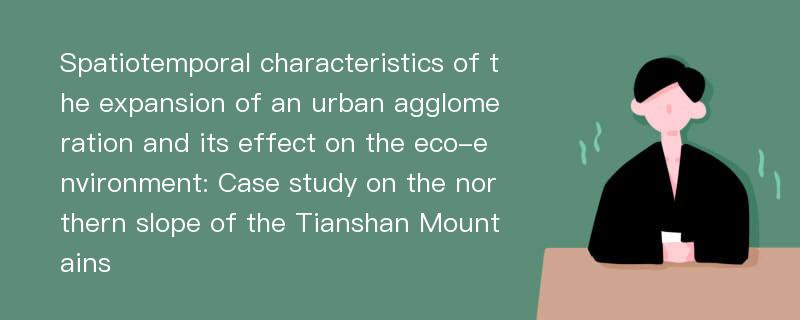
论文摘要
Urban agglomerations, which are highly integrated urban groups, form during the advanced stages of industrialization and urban development. The urban agglomeration on the northern slope of the Tianshan Mountains is one of the 19 urban agglomerations promoted by China’s 13th Five-Year Plan and a key area of urbanization in Xinjiang. Based on remote sensing data, we analyzed the expansion of construction land in the urban agglomeration on the northern slope of the Tianshan Mountains and its effect on ecological value in 1980–2015. The results show that the expansion of construction land significantly affected ecological value in the study area over the past 35 years. Among land use types, grassland was the dominant contributor to changes in ecological value; its contribution rate reached 66.27% with an interannual variation of only 5%. The contribution rate of urban and rural residential land along with industrial and mining lands was very low(0.82%), while the interannual variation was large(86%). The area of construction land in the urban agglomeration expanded from 1,067 to 2,586 km2, and the conversions of different land use types had different effects on ecological value. Among land use types, the conversions of lowcoverage grassland and dry land made the largest contributions to changes in ecological value. During the study period, a total of 1,685 km2 of ecological land, 69.91% of which belonged to cultivated land and grassland, was converted into construction land.A total area of 1,082 km2 of dry land and low-coverage grassland was converted into construction land, accounting for 64.21% of the total ecological land that was converted into construction land. In 2000–2015, the area of urban construction land increased significantly along with the proportion of unused land, including gobi(172 km2), bare land(65 km2), and salt-affected land(65 km2), being converted into construction land. In contrast, the area of construction land that was converted into ecological land was less than 166 km2. The areas with the largest expansions of construction land were concentrated in Urumqi, Karamay,and Changji, where the areas of construction land increased by 399, 186, and 126 km2, respectively. The areas with the most rapid expansions in construction land were concentrated in Kuytun, Toksun, and Usu. The environmental effects of construction land expansion and land use change were more positive in the late stage of urban agglomeration(2000–2015) compared to in the early stage(1980–2000). Kuytun City, Shihezi City, and Wujiaqu City showed large changes in ecological value caused by the expansion of construction land, whereas the changes in ecological value in the 14 other cities were relatively small, and the expansion of construction land slowed in 2000–2015 compared to in 1980–2000. In the future, further development of the urban agglomeration on the northern slope of the Tianshan Mountains should fully consider the sensitivity and carrying capacity of the vulnerable ecological environment in this area. Population growth and industrial development in the urban agglomeration should be controlled based on the available water resources and ecological capacity to reduce the pressure on the environment and ensure sustainable development.
论文目录
文章来源
类型: 期刊论文
作者: Chuanglin FANG,Qian GAO,Xiaolei ZHANG,Weiguo CHENG
来源: Science China(Earth Sciences) 2019年09期
年度: 2019
分类: 基础科学,工程科技Ⅰ辑,工程科技Ⅱ辑
专业: 环境科学与资源利用,建筑科学与工程
单位: Institute of Geographic Sciences and Natural Resources Research, Chinese Academy of Sciences,College of Resources and Environmental Science, Xinjiang University,Xinjiang Institute of Ecology and Geography, Chinese Academy of Sciences
基金: supported by the Major Program of the National Natural Science Foundation of China (Grant No. 41590842),the Strategic Priority Research Program (A) of the Chinese Academy of Sciences (Grant No. XDA20040400)
分类号: TU984.113;X826
页码: 1461-1472
总页数: 12
文件大小: 1558K
下载量: 74
